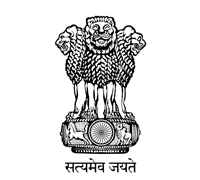Book Details
BACK|
Title |
AIŃKURUNŪRU(Malayalam) |
|
Author |
Prof. Ulloor Parameswaran |
|
Publisher |
Chennai: Central Institute of Classical Tamil |
|
Publish Year |
2024 |
|
Language |
Malayalam |
|
Book ISBN |
978-81-19249-65-7 |
|
Number of Pages |
464 |
|
Book Price |
Rs.1000.00 |
|
About the Book:- |
Traditionally counted as one among the eight anthologies of classical Tamil verse, the Ainkurunūru (literally, "the Short Five Hundred, by extension, "Five Hundred Short Poems"), is an anthology of akam (love) poems dating from the third Cankam period. The Ainkurunüru is difficult to date, as are all classical Tamil texts. Some scholars agree that the Ainkurunüru is later than most of the other classical anthologies. The text consists of five sections, each containing one hundred poems. The individual poems range in length from three to six lines. Each section focuses on one of the five tinais (landscapes) of reciprocal love, a genre first described by the Tolkäppiyam, the earliest extant work on Tamil phonology, grammar, and poetics. The Ainkurunüru was commissioned by a Cera-dynasty king. Yarņaikat Cey Mäntärańcéral Irumporal. The actual compiler is identified in the colophon as Pulatturai Murriya Kütalür Kilar. The text is unique in many ways, but the main characteristic distinguishing it from the other classical anthologies-save for the relatively later - Kalittokai is that it presents the work of only five poets. Each poet composed one hundred poems on the poetic landscape in which he was considered a virtuoso. The Ainkururüru is one among a set of eight anthologies usually designated as Carikam (assembly, fraternity, mustering), scholars prefer the adjective "classical" to refer to both this literature and the language in which it was composed. The publishing history of this text is brief, as is that of all classical Tamil texts. Tamil savant U. Ve. Căminätaiyar (1855-1942) was one of a small but tireless band of scholars who rescued the Tamil anthologies from obscurity when he found them. in palm-leaf manuscript form, bundled in a basket in a corner of a southern Indian monastery in the late nineteenth century. |













